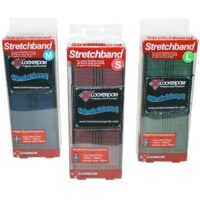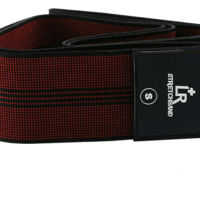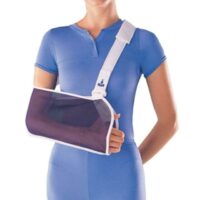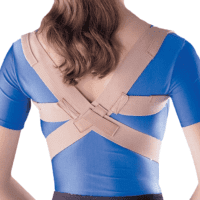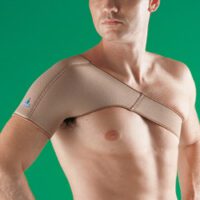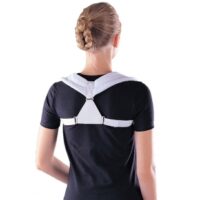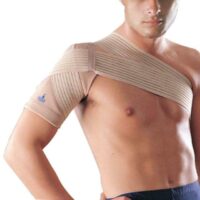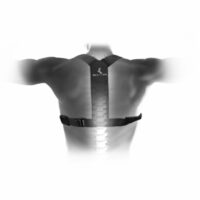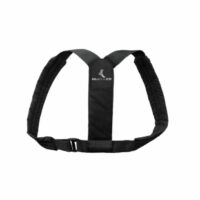Shoulder Labrum

Article by Matthew Hewitt

Shoulder Labrum Injuries
The shoulder labrum is a vital structure that plays a key role in shoulder stability. It’s a ring of cartilage that lines the edge of the glenoid cavity, or shoulder socket, helping to deepen this socket and provide a snug fit for the head of the humerus (the upper arm bone). This structure is essential for stabilising the shoulder joint and supporting the wide range of motion we use daily, from reaching overhead to rotating the arm in various directions.
Functions of the Shoulder Labrum
The labrum acts as both a cushion and an attachment site. It:
- Deepens the Socket: Enhances the fit of the humerus, helping to keep it in place.
- Absorbs Shock: Reduces the impact on the shoulder joint from sudden or repetitive movements.
- Provides Stability: Anchors various shoulder ligaments and tendons, supporting overall shoulder stability.
Common Labral Injuries
The shoulder joint’s wide range of motion naturally makes it somewhat unstable, which puts the labrum at risk for injury. Labral injuries often happen during activities that involve repetitive overhead motions, high-impact sports, or traumatic events like falls. Here are the most common labral injuries:
- SLAP Tear (Superior Labrum from Anterior to Posterior): This injury affects the top (superior) part of the labrum where the biceps tendon attaches. SLAP tears are often seen in athletes, especially those involved in throwing sports or activities that require overhead motion, like tennis or swimming.
- Bankart Lesion: This tear affects the lower portion of the labrum, often resulting from shoulder dislocations. It’s particularly common in younger individuals who have experienced traumatic shoulder injuries.
- Posterior Labral Tear: This is a less common tear that occurs in the back part of the labrum, often caused by a direct blow to the front of the shoulder or due to excessive strain during certain weightlifting exercises.
Symptoms of Labral Injuries
Labral injuries can vary in symptoms depending on the type and severity of the tear but generally include:
– Pain: Especially during overhead movements, lifting, or pushing.
– Clicking or Catching Sensation: Feeling a pop, click, or catching sensation in the shoulder.
– Weakness and Instability: Difficulty keeping the shoulder stable or weak arm movements, particularly in activities that require a full range of motion.
Shoulder Labrum Treatment Options
The course of treatment depends on the type and severity of the labral tear:
- Physiotherapy & Conservative Management: For many labral injuries, physiotherapy can strengthen the shoulder muscles, improve range of motion, and stabilise the joint. Anti-inflammatory medications may also help to manage pain. Exercises focusing on shoulder stabilisation, flexibility, and strengthening the rotator cuff and scapular muscles are crucial for recovery. Your physiotherapist will tailor exercises to reduce strain on the labrum and improve shoulder function.
- Surgical Repair: In cases where the tear is severe or conservative measures fail, arthroscopic surgery may be recommended to repair or remove damaged labral tissue.
Prevention Tips
To help prevent labral injuries:
– Warm-Up Properly: Take time to stretch and warm up before engaging in sports or exercise, especially if it involves repetitive overhead movements.
– Strengthen Shoulder Muscles: Focus on building a balanced shoulder and rotator cuff strength to support joint stability.
– Limit Overhead Activities: For those at risk, be mindful of repetitive overhead activities and try to avoid excessive strain.
If you’re experiencing shoulder pain or instability, it’s essential to seek advice from a healthcare professional who can guide you on the best treatment options and exercises to aid in recovery. Understanding the shoulder labrum and taking steps to protect it can make a big difference in maintaining shoulder health and function over the long term.
What to Do?
If you are experiencing persistent shoulder pain or instability, consult a physiotherapist. Early treatment can prevent further damage and promote recovery.
Rochedale - Call 38410277
Book Online: RochedaleSalisbury - Call 32751044
Book Online: SalisburySandgate - Call 32691122
Book Online: SandgateShoulder Labrum FAQs
- What is a shoulder labrum?
The shoulder labrum is a ring of cartilage that stabilises the shoulder joint. - What are the symptoms of a torn labrum?
Symptoms include pain, clicking sensations, and instability in the shoulder. - How is a SLAP tear treated?
Treatment can include physiotherapy, rest, and in severe cases, surgery. - Can you recover from a labral tear without surgery?
It all depends upon the future demands you will be placing upon your shoulder. Yes, physiotherapy and strengthening exercises are effective for many cases, especially as we age and slow down our overhead should requirements. Generally, active younger patients would be wise to consider surgical opinion. - What causes labral tears?
They are often caused by repetitive overhead movements, trauma, or dislocation. - Is a labral tear serious?
Severity depends on the type of tear and symptoms experienced. - How long does recovery take after a labral tear?
Recovery can range from weeks to months, depending on the treatment approach. - What exercises are good for a torn labrum?
Strengthening exercises for the rotator cuff and scapular stabilisers are ideal. - Can a torn labrum heal on its own?
Small tears may heal with rest and physiotherapy, but severe ones often require surgery. - How do you prevent labral injuries?
Warm-ups, strengthening exercises, and avoiding repetitive overstrain are key.
Related Articles
- Shoulder Pain: Causes and Treatments | Learn about common causes of shoulder pain and effective treatment strategies.
- Rotator Cuff Injuries | Explore treatments to strengthen and stabilise the shoulder joint.
- Shoulder Joint Stability | Discover tips for improving shoulder joint stability.
- Physiotherapy for Shoulder Pain | Learn how physiotherapy can relieve shoulder discomfort.
- Rehabilitation After Shoulder Surgery | Guidance on post-surgical recovery exercises.
- Common Sports Injuries in Tennis | Explore shoulder injury prevention for athletes.
- Labral Tears of the Shoulder| Detailed insights into symptoms, diagnosis, and treatments.
- Shoulder Pain and Injuries | Learn about various shoulder conditions and solutions.
- SLAP Tears and Treatment Options | Understand SLAP tears in depth and explore surgical and non-surgical treatments.


















